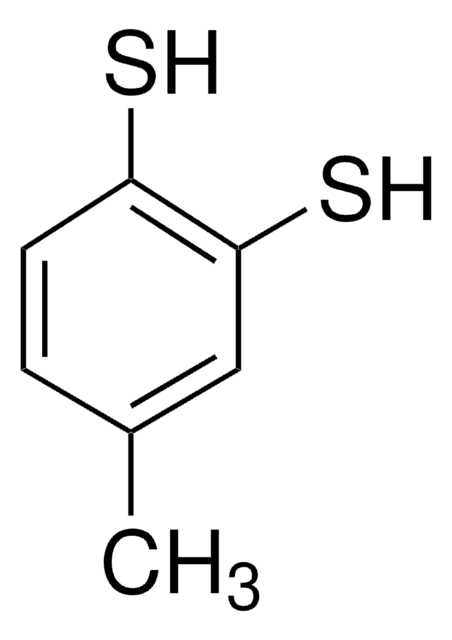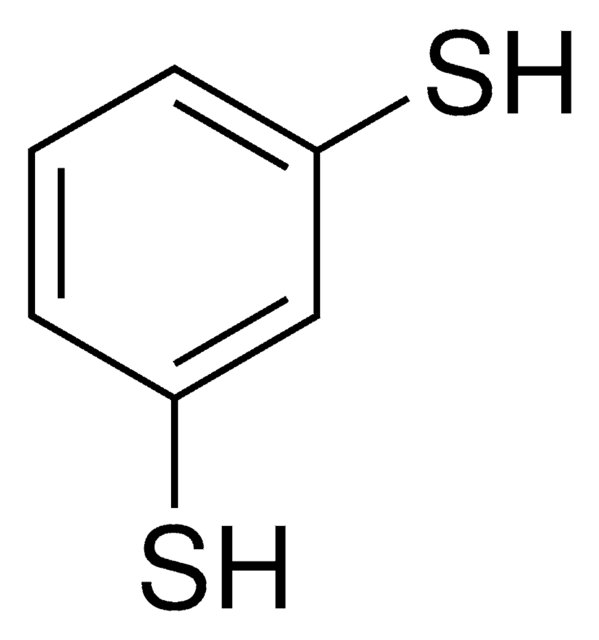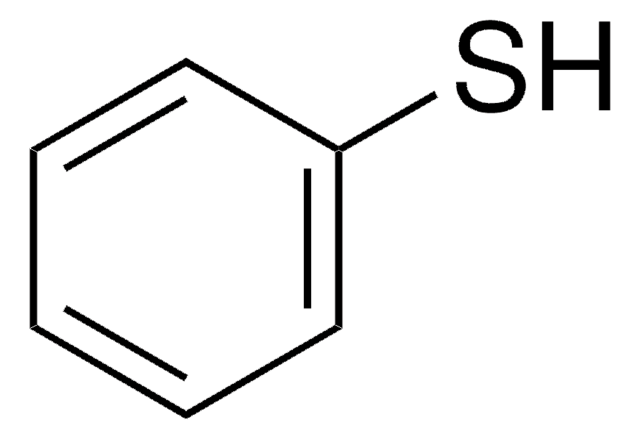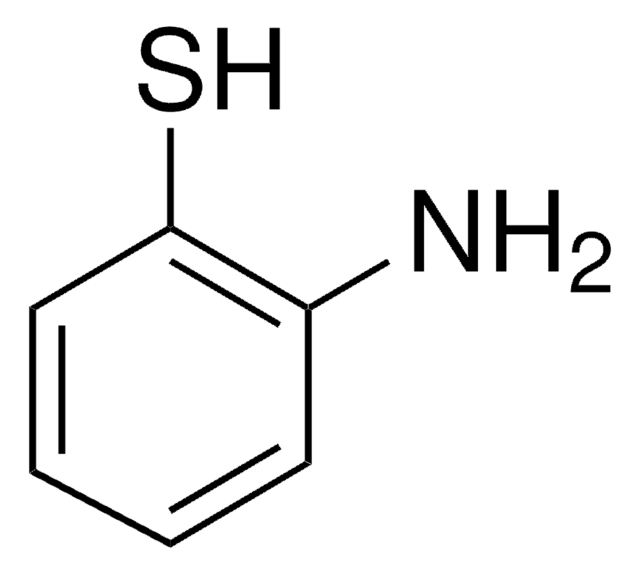D129208
Toluene-3,4-dithiol
technical grade, 90%
Synonym(s):
3,4-Dimercaptotoluene, 4-Methyl-1,2-benzenedithiol, ‘Dithiol’
Sign Into View Organizational & Contract Pricing
All Photos(1)
About This Item
Linear Formula:
CH3C6H3(SH)2
CAS Number:
Molecular Weight:
156.27
Beilstein:
1635270
EC Number:
MDL number:
UNSPSC Code:
12352100
PubChem Substance ID:
NACRES:
NA.22
Recommended Products
grade
technical grade
Quality Level
Assay
90%
form
powder
bp
135-137 °C/17 mmHg (lit.)
mp
30-33 °C (lit.)
density
1.179 g/mL at 25 °C (lit.)
storage temp.
−20°C
SMILES string
Cc1ccc(S)c(S)c1
InChI
1S/C7H8S2/c1-5-2-3-6(8)7(9)4-5/h2-4,8-9H,1H3
InChI key
NIAAGQAEVGMHPM-UHFFFAOYSA-N
Looking for similar products? Visit Product Comparison Guide
Related Categories
Application
Used to generate the corresponding dithiolate ligand in a study of dinuclear gold(I) dithiolate complexes.
Storage Class Code
11 - Combustible Solids
WGK
WGK 3
Flash Point(F)
235.4 °F - closed cup
Flash Point(C)
113 °C - closed cup
Personal Protective Equipment
dust mask type N95 (US), Eyeshields, Gloves
Choose from one of the most recent versions:
Already Own This Product?
Find documentation for the products that you have recently purchased in the Document Library.
Customers Also Viewed
Inorganic Chemistry, 32, 1749-1749 (1993)
Artem Mishchenko et al.
Nano letters, 10(1), 156-163 (2009-12-23)
The conductance of a family of biphenyl-dithiol derivatives with conformationally fixed torsion angle was measured using the scanning tunneling microscopy (STM)-break-junction method. We found that it depends on the torsion angle phi between two phenyl rings; twisting the biphenyl system
Yang Han et al.
Journal of the American Chemical Society, 132(9), 2961-2967 (2010-02-13)
A new approach to optical monitors for gases is introduced using cholesteric liquid crystals doped with reactive chiral compounds. The approach is based on cholesteric pitch length changes caused by a change in helical twisting power (HTP) of the chiral
Hua Liu et al.
Proceedings of the National Academy of Sciences of the United States of America, 105(41), 15926-15931 (2008-10-08)
An elaborate network of highly inducible phase 2 proteins protects aerobic cells against the cumulative damaging effects of reactive oxygen intermediates and toxic electrophiles, which are the major causes of malignancy and chronic degenerative diseases. Many chemical and phytochemical agents
Justin P Bergfield et al.
Nano letters, 11(7), 2759-2764 (2011-06-15)
We investigate electronic transport through molecular radicals and predict a correlation-induced transmission node arising from destructive interference between transport contributions from different charge states of the molecule. This quantum interference effect has no single-particle analog and cannot be described by
Global Trade Item Number
| SKU | GTIN |
|---|---|
| D129208-1ML | 4061837252860 |
| D129208-5ML | 4061837252877 |
Our team of scientists has experience in all areas of research including Life Science, Material Science, Chemical Synthesis, Chromatography, Analytical and many others.
Contact Technical Service










